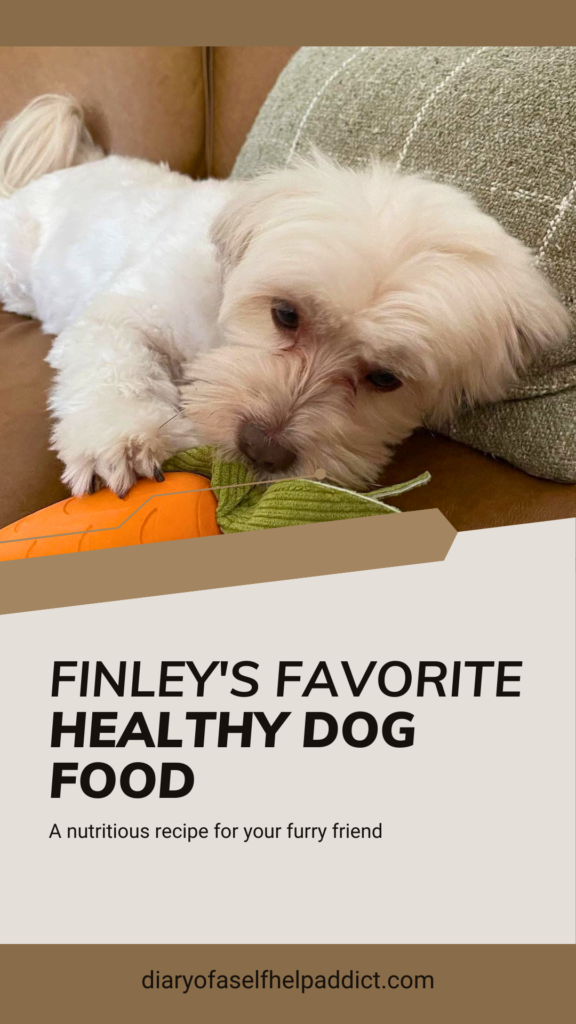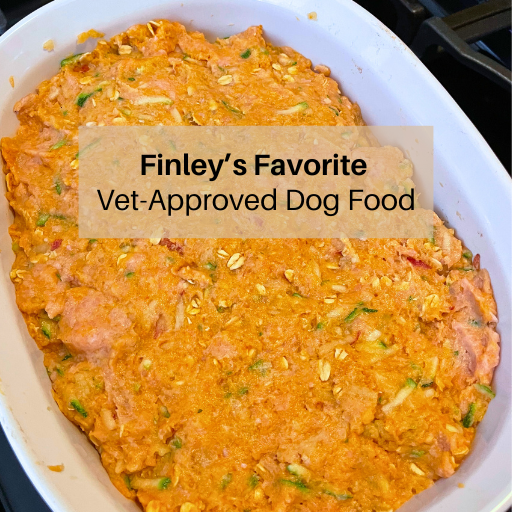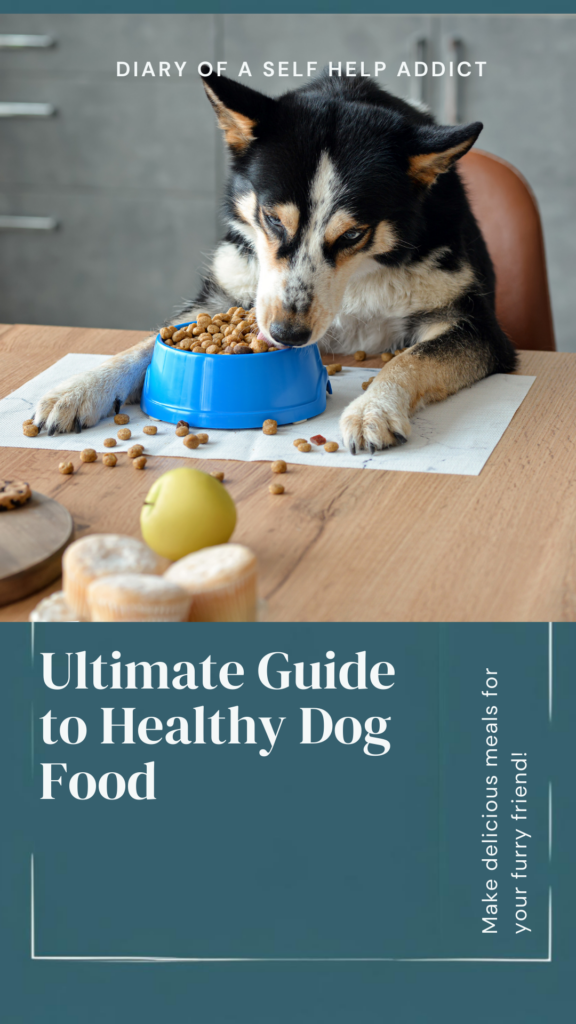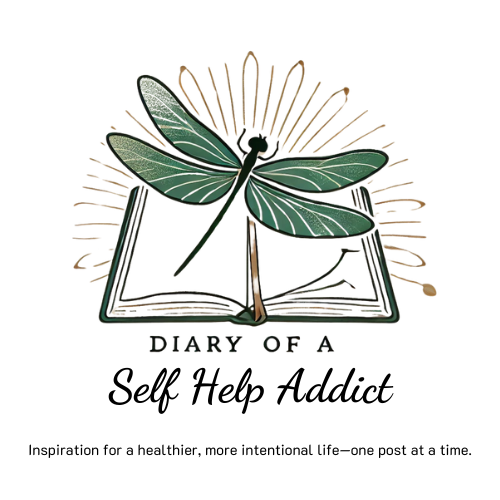
If there’s one thing I’ve learned from my sweet 7-year-old pup, Finley, it’s that dog food isn’t just about nutrition—it’s about love. Since we brought her home, she’s been more than just a pet; she’s family. And just like any family member, I want to give her the best care possible, starting with her diet.
Over the years, I’ve researched, tested, and fine-tuned what works best for Finley’s health and happiness. While we primarily use Dr. Marty’s small-breed dog food with probiotic powder, organic boxed chicken broth, and a sprinkle of food-grade diatomaceous earth for flea and tick prevention, I also enjoy making her meals from scratch.
In this guide, I’ll share what I’ve learned about the best and worst foods for dogs, how to determine the correct portion sizes based on weight, and my go-to homemade recipe that Finley absolutely loves.
Healthy Foods for Dogs
Dogs thrive on a balanced diet of protein, healthy fats, fiber, and essential vitamins. Here are some of the best ingredients to incorporate into your pup’s meals:
1. Lean Proteins
- Chicken
- Turkey
- Beef
- Salmon (great for omega-3s and skin health)
- Eggs (cooked, not raw)
2. Healthy Carbohydrates & Fiber
- Oatmeal (easy to digest and suitable for energy)
- Brown rice
- Sweet potatoes
- Quinoa
3. Fruits & Vegetables
- Apples (without seeds, which are toxic)
- Blueberries (antioxidant-rich)
- Carrots (great for dental health)
- Pumpkin (aids digestion)
- Zucchini (low-calorie, nutrient-dense)
- Green beans
4. Healthy Fats
- Coconut oil (helps with skin and coat health)
- Flaxseeds
- Chia seeds
Related Read: UNLOCK THE BENEFITS OF HEALTHY LIVING WITH THRIVE MARKET!
Unhealthy (or Dangerous) Foods for Dogs
Not everything safe for humans is safe for dogs. Some foods can be harmful or even toxic:
- Chocolate & Caffeine – Contains theobromine, which is toxic to dogs.
- Grapes & Raisins – Can cause kidney failure.
- Onions & Garlic – Toxic in large amounts and can damage red blood cells.
- Avocado – Contains persin, which can be harmful.
- Xylitol (in sugar-free gum & peanut butter) – Can cause liver failure and dangerously low blood sugar.
- Alcohol & Raw Dough – Both are highly toxic.
- Macadamia Nuts – Can cause muscle tremors and weakness.
Determining the Right Portion Size for Your Dog
When making homemade dog food, it’s crucial to portion meals correctly based on your dog’s weight and activity level. A general guideline:
- Small Dogs (10-20 lbs): ¾ to 1 cup per day or 300-500 calories
- Medium Dogs (20-50 lbs): 1 to 2 cups per day or 500 to 800 calories
- Large Dogs (50+ lbs): 2 to 4 cups per day or 900-1100 calories
Active dogs may need more, while older or less active dogs may need less. Always check with your vet to fine-tune portion sizes for your pup’s specific needs.
Most vets recommend feeding dogs twice daily to help regulate digestion and prevent stomach acid buildup, which can cause discomfort or vomiting if their stomach remains empty for too long.
Homemade Dog Food Recipe: Finley’s Favorite Meal

This simple, nutrient-packed meal is easy to prepare and packed with essential nutrients, and Finley loves it!
Ingredients:
- 2 lbs (4 cups) ground chicken or turkey
- 1/2 cup oatmeal (May substitute with 3/4 cup barley or 3/4 cup millet or 3/4 cup brown rice)
- 3/4 cup grated apple (no seeds)
- 3/4 cup grated carrot
- 3/4 cup grated zucchini
- 3/4 cup organic canned pumpkin (May substitute with sweet potato)
Instructions:
- Preheat oven to 350°F.
- In a mixing bowl, combine all ingredients and mix thoroughly.
- Form into a loaf on a baking sheet.
- Bake for 45 minutes or until cooked through, or cook on low in a crockpot overnight.
- Let cool, then cut into portion-sized servings.
- Store in an airtight container in the fridge for up to 5 days, or freeze for longer storage.
This recipe makes 2000 calories. See above to determine how many calories to feed your dog per day. As always, check with your veterinarian for your dog’s nutritional needs.
Additional Tips for Feeding Your Dog
- Gradual Transition: If switching to homemade food, introduce it slowly over a few days to avoid stomach upset.
- Hydration Matters: Always provide fresh water, especially if feeding dry kibble.
- Supplements: Add omega-3s, probiotics, or a vet-approved multivitamin for added health benefits.
- Monitor Weight & Energy Levels: Adjust portions as needed to maintain a healthy weight.
Kelly’s Thoughts
Feeding Finley a combination of high-quality commercial food and homemade meals has been one of the best decisions for her health and happiness. We can ensure our furry friends live long, joyful lives by choosing nutritious ingredients and avoiding harmful ones.
Whether you’re starting with homemade meals or looking for a new recipe, I hope this guide inspires you to look closer at what’s in your dog’s bowl. After all, dogs give us unconditional love—it’s only right that we return the favor with wholesome, nourishing meals!
Do you make homemade food for your pup? I’d love to hear your favorite recipes and tips in the comments below!
Pin it for later


Love that more awareness is being raised for healthy animal food rather than bagged store food. Good tips!,
Thank you, Kayla!